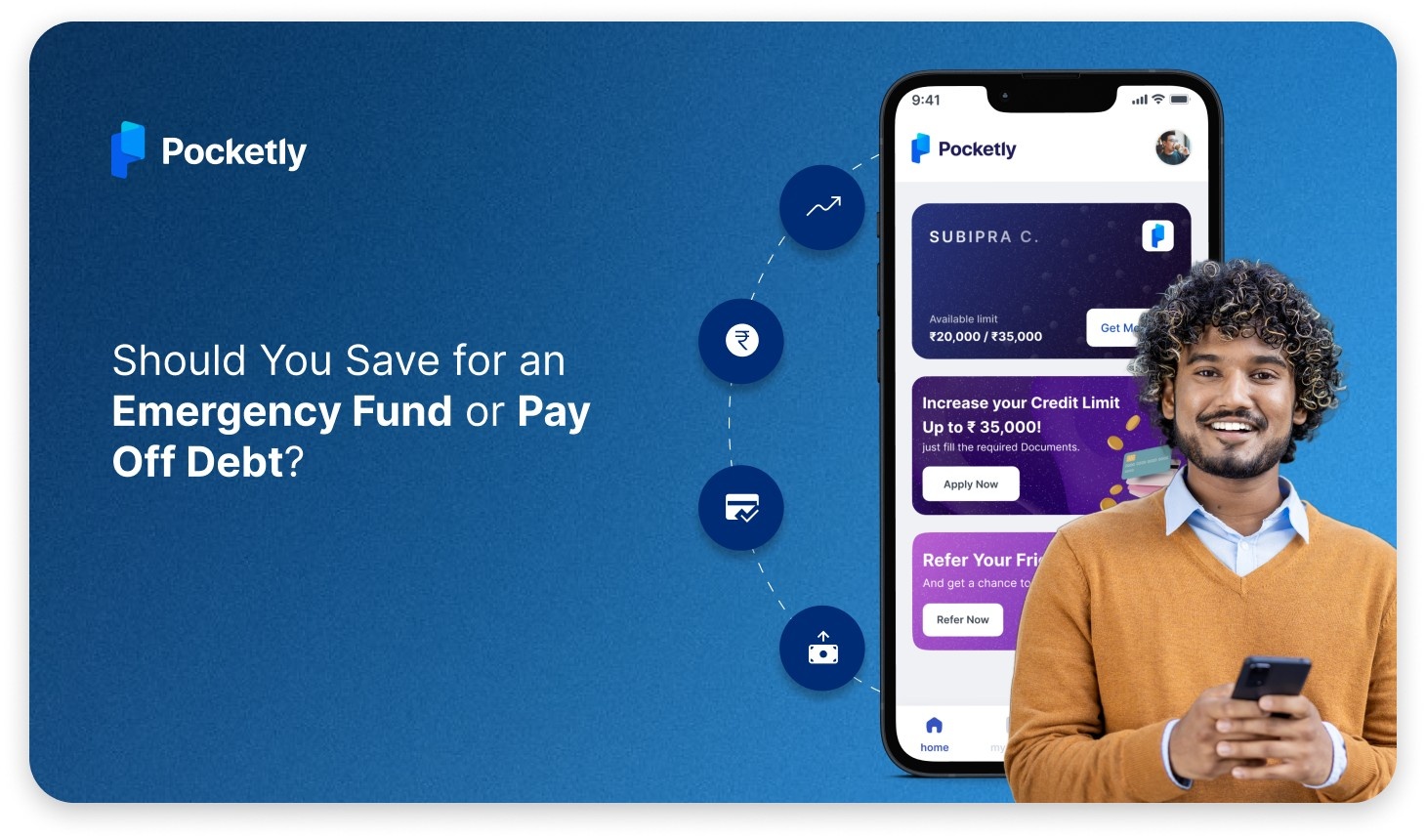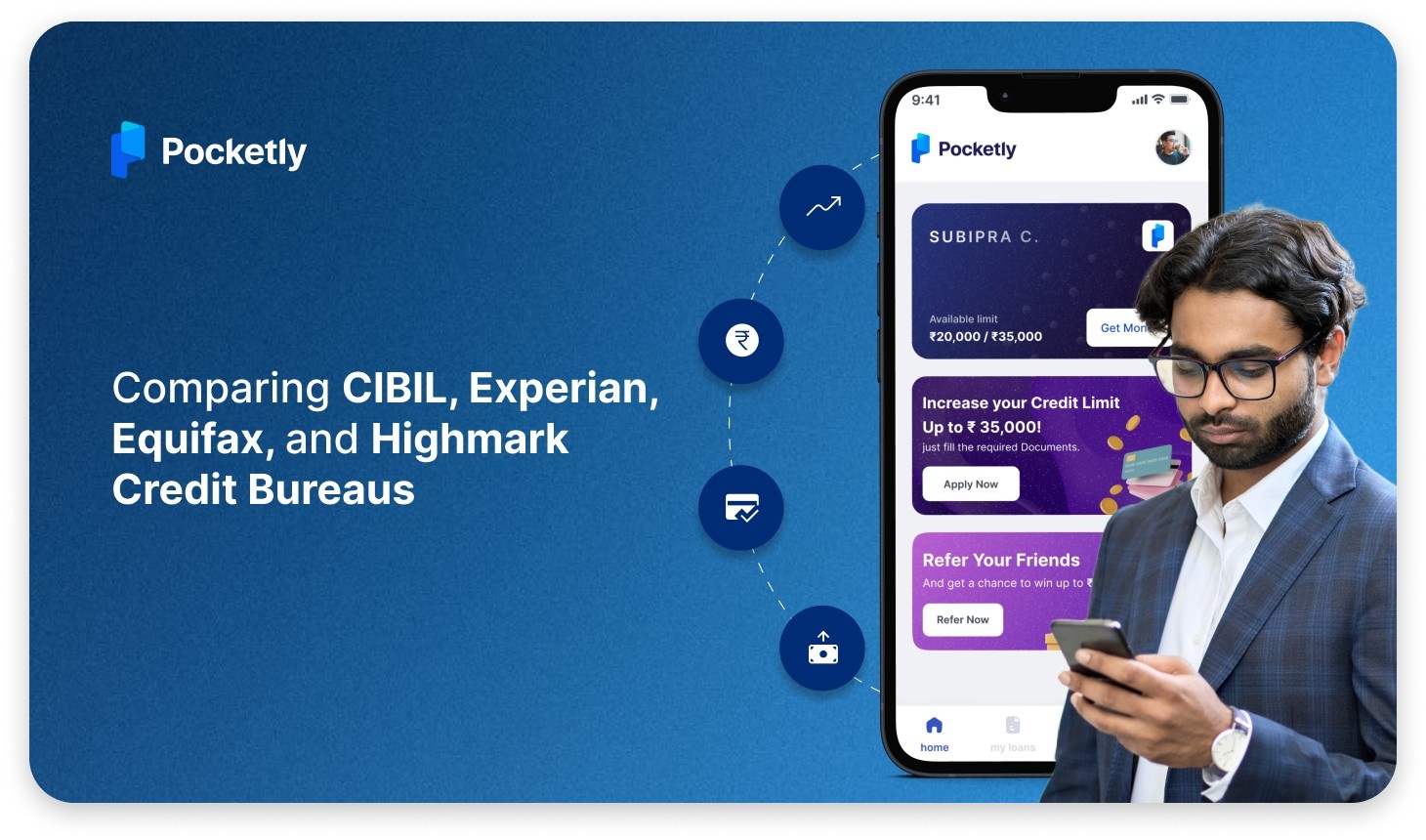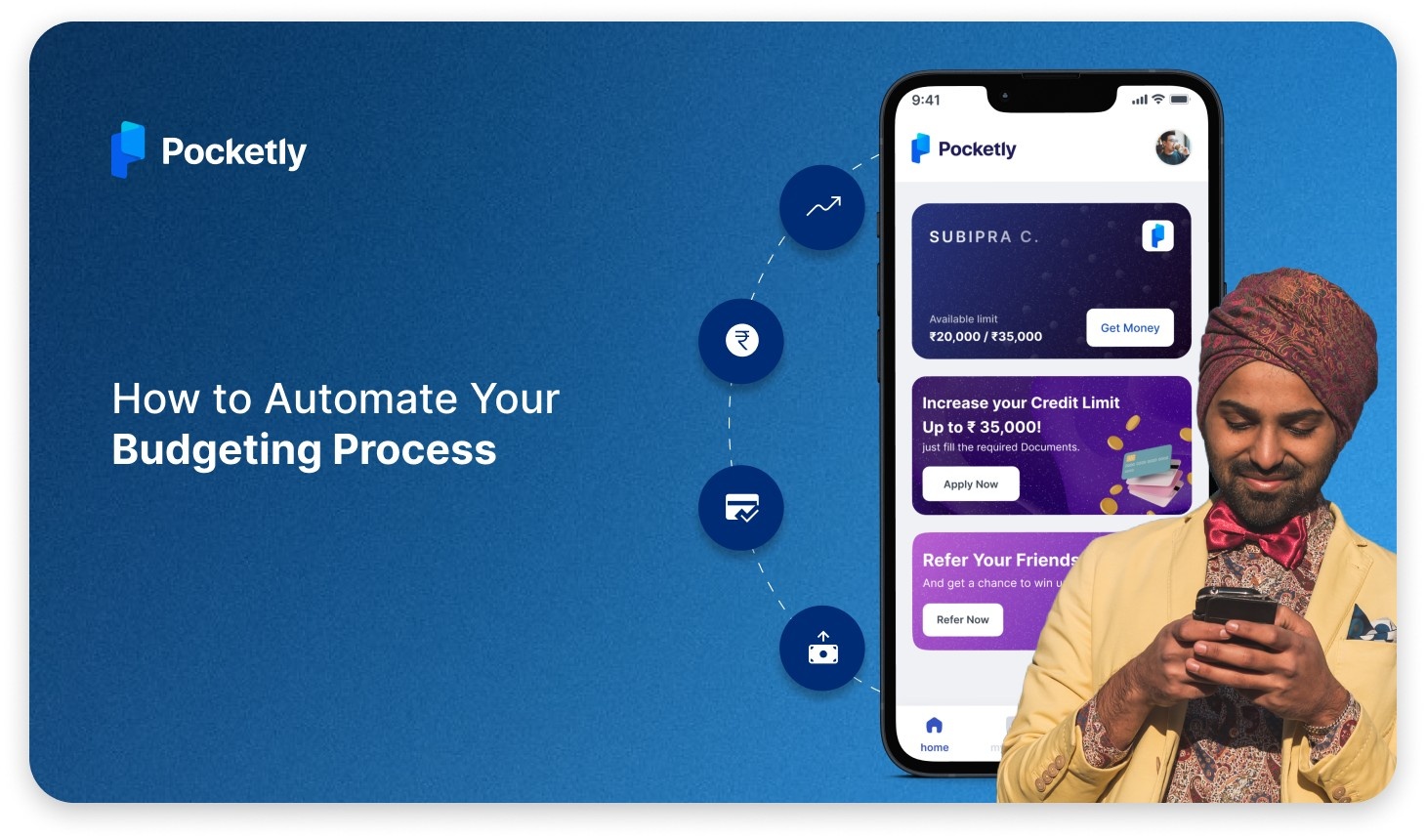
If you're earning ₹60,000 per month and wondering how much personal loan you can get, you’re not alone. Many people look for loans to manage unexpected expenses, fund big purchases, or consolidate debt, but the amount you’re eligible for depends on several factors.
Lenders don’t just look at your salary—they also consider your credit score, existing financial commitments, employment stability, and repayment capacity. A higher salary increases your loan eligibility, but if you have existing EMIs, it may affect the final loan amount.
So, how much can you actually borrow? Let’s break it down and help you understand your personal loan eligibility, how it’s calculated, and what you can do to increase it.
What Are Personal Loans and Their Purpose?
A personal loan is an unsecured loan that allows you to borrow money without pledging collateral. Unlike home or car loans, personal loans can be used for multiple purposes based on your financial needs. These loans typically have fixed interest rates and flexible repayment tenures, making them a convenient option for salaried individuals.
Common Uses of Personal Loans:
- Medical Emergencies – Cover unexpected hospital bills and treatments without financial strain.
- Home Renovation – Upgrade or repair your home without using up your savings.
- Debt Consolidation – Pay off multiple loans or credit card debt with a single personal loan.
- Education Expenses – Fund tuition fees, certification courses, or study abroad expenses.
- Wedding Expenses – Manage high wedding costs, from venue booking to catering and travel.
- Travel and Vacations – Finance dream vacations without waiting years to save up.
- Gadgets & Big Purchases – Buy expensive gadgets, appliances, or electronics with easy EMIs.
Since personal loans offer quick approval, minimal documentation, and flexible usage, they are a great financial tool for urgent or planned expenses.
Key Benefits of Personal Loans
A personal loan is one of the most flexible and accessible financial tools available. Since it’s an unsecured loan, you don’t need to pledge collateral, making it a great option for covering various planned or emergency expenses.
- No Collateral Required – You don’t have to pledge assets like property or gold to secure a personal loan.
- Quick Disbursal – Many lenders offer instant approvals and same-day disbursal, making it ideal for emergencies.
- Flexible Loan Amounts – Borrow anywhere from a few thousand to several lakhs, depending on your eligibility.
- Multi-Purpose Use – Use the funds for medical emergencies, travel, education, weddings, home renovation, or debt consolidation.
- Customisable Repayment Options – Choose tenures ranging from 12 months to 5 years to suit your budget.
- Credit Score Improvement – Timely repayments help boost your CIBIL score, making it easier to qualify for future loans.
- Minimal Documentation – With e-KYC and digital processing, applying for a personal loan is quick and hassle-free.
Whether you need funds for an urgent expense or a planned purchase, a personal loan provides the financial flexibility you need without unnecessary complications.
Key Factors Influencing Loan Amount
When applying for a personal loan, your salary alone isn’t the only factor that determines how much you can borrow. Lenders assess multiple aspects, including your creditworthiness, existing financial obligations, and repayment capacity, before approving a loan. Understanding these factors can help you maximise your eligibility and secure better loan terms.
Key Factors That Influence Your Loan Amount:
- Income Level – A higher salary increases borrowing capacity, as lenders consider your ability to repay the loan.
- Credit Score – A CIBIL score of 750+ improves your chances of getting higher loan amounts and lower interest rates.
- Employment Stability – Working in a reputed company or government sector makes you a low-risk borrower, increasing your loan eligibility.
- Existing Financial Obligations – If you already have ongoing EMIs, credit card dues, or other loans, it may reduce the loan amount you qualify for.
- Debt-to-Income (DTI) Ratio – Lenders prefer a DTI ratio below 50%, meaning your total EMIs should not exceed half of your monthly income.
- Loan Tenure Chosen – Opting for a longer repayment tenure can increase your loan amount, as it reduces the EMI burden.
- Lender-Specific Policies – Different banks and NBFCs have varied loan approval criteria, which can impact your eligibility and loan amount.
By managing these factors effectively, you can enhance your eligibility and secure a higher loan amount with favourable terms.
Loan Calculation Methods
Lenders use different calculation methods to determine how much personal loan you are eligible for. These methods help assess your repayment capacity, financial commitments, and income stability before approving a loan. The most commonly used techniques are the Multiplier Method and the Fixed Obligations to Income Ratio (FOIR) Method.
Understanding these will help you estimate the loan amount you can secure and plan your finances accordingly.
1. Multiplier Method
How It Works:
- In this method, lenders offer a loan amount based on a multiple of your net monthly income.
- Typically, financial institutions provide loans between 20 to 30 times your monthly salary.
- A person earning ₹60,000 per month may qualify for a loan ranging from ₹12 lakh to ₹18 lakh.
Benefits:
- Simple and quick estimation method
- Higher salary means higher loan eligibility
- No impact of existing financial obligations
Example:
If your monthly salary is ₹60,000, and the bank uses a multiplier of 25, your maximum loan eligibility will be:
₹60,000 × 25 = ₹15,00,000 (₹15 lakh loan eligibility)
2. Fixed Obligations to Income Ratio (FOIR) Method
How It Works:
- The FOIR method considers your existing monthly financial obligations, like credit card bills, EMIs, and other debts.
- Lenders ensure that your total fixed obligations (including the new loan EMI) do not exceed 50% of your net monthly income.
- If you already have existing EMIs, it reduces the amount you can borrow.
Benefits:
- Ensures better financial planning and repayment capacity
- Prevents borrowers from taking excessive debt
- Helps maintain a balanced debt-to-income ratio
Example:
If your monthly income is ₹60,000 and you already have an EMI of ₹15,000, lenders will calculate your loan eligibility based on:
- Maximum allowable EMI = 50% of ₹60,000 = ₹30,000
- New loan EMI allowance = ₹30,000 - ₹15,000 = ₹15,000
Using an EMI calculator, a ₹15,000 EMI for a 5-year tenure at 10% interest would give a loan amount of approximately ₹7-8 lakh.
Which Loan Calculation Method Is Better?
- The Multiplier Method is useful if you have no existing loans or credit card dues.
- The FOIR Method is preferred by lenders for a more accurate measure of financial stability, especially for individuals with multiple financial commitments.
Knowing these methods will help you calculate your estimated loan eligibility and plan your loan application strategically!
To understand the calculation for FOIR, check out our guide on Understanding FOIR: Calculation and Its Impact on Banking.
Loan Amount Scenarios Based on ₹60,000 Salary
Your salary plays a very important role in determining the personal loan amount you can secure. However, lenders also consider existing financial commitments, credit scores, and repayment capacity before approving a loan. If you earn ₹60,000 per month, your loan eligibility might vary based on whether you have existing EMIs, apply individually, or apply with a co-applicant.
Below are different scenarios that impact how much personal loan you can get based on a ₹60,000 monthly income.
1. Loan Eligibility with No Existing Obligations
- If you don’t have any ongoing loans or EMIs, lenders typically offer a loan amount 20-30 times your monthly income.
- For a ₹60,000 salary, this means your loan eligibility can range between ₹12 lakh to ₹18 lakh, depending on the lender’s policies and your credit score.
Example Calculation:
If a lender offers a salary multiplier of 25, your estimated loan eligibility would be:
₹60,000 × 25 = ₹15,00,000 (₹15 lakh)
2. Loan Eligibility with ₹20,000 Existing EMI
- If you already have an EMI obligation of ₹20,000, it affects your Fixed Obligations to Income Ratio (FOIR), which lenders use to assess repayment capacity.
- Lenders prefer that total EMIs (including the new loan) don’t exceed 50% of your monthly income.
- With a ₹60,000 salary, your total EMI capacity is ₹30,000. Since ₹20,000 is already committed, you may only be eligible for a new loan with a ₹10,000 EMI, reducing your total loan amount.
Example Calculation:
If ₹10,000 is your new EMI at 10% interest for 5 years, your estimated loan amount would be around ₹6-7 lakh.
3. Loan Eligibility When Applying with a Co-Applicant
- If your salary alone isn’t enough for the loan amount you need, adding a co-applicant (spouse or family member) can increase eligibility.
- Lenders combine both incomes, which reduces the debt-to-income ratio and boosts the total loan amount.
Example Calculation:
- If you and your spouse both earn ₹60,000 each, your combined income is ₹1,20,000 per month.
- This can increase the eligible loan amount to ₹20 lakh+, depending on existing financial commitments and credit scores.
Key Takeaway
- If you have no existing loans, you may qualify for ₹12-18 lakh.
- If you have a ₹20,000 EMI, your loan eligibility reduces to ₹6-7 lakh.
- Applying jointly with a co-applicant can significantly increase the loan amount you qualify for.
Understanding these scenarios helps you plan your loan application effectively, ensuring you get the right loan amount without financial strain.
EMI Calculations for Different Loan Amounts
Before applying for a personal loan, it's crucial to understand your Equated Monthly Installment (EMI) to ensure smooth repayment. EMI depends on several factors like loan amount, interest rate, and tenure.
Below is an estimated EMI table for different loan amounts at a 10% annual interest rate for varying tenures.
| Loan Amount (₹) | Interest Rate (p.a.) | Loan Tenure (Months) | Approximate EMI (₹) |
|---|---|---|---|
| 20,000 | 10% | 12 | 1,761 |
| 50,000 | 10% | 24 | 2,312 |
| 1,00,000 | 10% | 36 | 3,226 |
| 2,00,000 | 10% | 48 | 5,097 |
| 5,00,000 | 10% | 60 | 10,624 |
Notes: These figures are approximate and may vary based on lender policies and processing fees. Always use an EMI calculator to get an exact estimate before applying.
Example EMI Calculation
Let's say you take a ₹50,000 personal loan at an interest rate of 10% per annum with a repayment tenure of 24 months.
- Loan Amount: ₹50,000
- Interest Rate: 10% per annum
- Loan Tenure: 24 months
- Approximate EMI: ₹2,312
This means you will need to pay ₹2,312 every month for 24 months to fully repay the loan. If you’re considering a different loan amount or tenure, using an EMI calculator will help you get an exact estimate based on your financial situation.
Also read our guide on, Basic Salary Calculation: Factors, Deductions and Tax Liability.
Tips to Enhance Loan Eligibility
Improving your loan eligibility increases your chances of getting higher loan amounts, lower interest rates, and better repayment terms. Lenders assess your creditworthiness, repayment capacity, and financial stability before approving a personal loan.
By taking a few strategic steps, you can strengthen your profile and qualify for a better loan offer.
How to Improve Your Loan Eligibility:
- Maintain a High Credit Score – A healthy CIBIL score of 750 or above increases your approval chances and helps you secure lower interest rates.
- Reduce Existing Debt – Lower your ongoing EMIs and credit card dues to improve your Debt-to-Income (DTI) ratio, making you a less risky borrower.
- Choose a Longer Loan Tenure – Opting for a longer repayment tenure reduces your EMI amount, making loan approval easier.
- Apply with a Co-Applicant – A joint loan application with a spouse or family member can get faster eligibility by combining incomes.
- Show Additional Income Sources – If you have rental income, freelancing earnings, or investment returns, declare them to increase your repayment capacity.
- Avoid Multiple Loan Applications at Once – Submitting loan applications to different lenders within a short period reduces your credit score and signals financial distress.
- Ensure Stable Employment – Lenders prefer borrowers with a stable job in a reputed company or government sector, as it assures a steady income flow.
- Check and Correct Credit Report Errors – Regularly reviewing your credit report helps identify and dispute any incorrect negative remarks that may impact your score.
- Maintain a Low Credit Utilisation Ratio – Try to maintain the credit card usage below 30% of the total credit limit to reflect responsible credit management.
- Negotiate Better Terms with Lenders – If you have a good credit history, you can bargain for lower interest rates and processing fees.
By following these steps, you can increase your loan eligibility, secure better financial deals, and ensure a hassle-free borrowing experience.
Common Reasons for Personal Loan Rejections
Getting a personal loan can be frustrating, especially when you need funds urgently. Lenders assess multiple factors before approving a loan, and even a small issue can lead to rejection.
Understanding these common reasons can help you avoid mistakes and improve your chances of loan approval.
Why Personal Loans Get Rejected:
- Low Credit Score – A CIBIL score below 650 signals a high credit risk, making lenders hesitant to approve your loan.
- High Debt-to-Income (DTI) Ratio – If your existing EMIs and debts exceed 50% of your monthly income, lenders might reject your application due to insufficient repayment capacity.
- Unstable Employment History – Frequent job changes or working in an unrecognised company can reduce your loan approval chances.
- Multiple Loan Applications – Applying to several lenders at once triggers multiple hard inquiries, which lowers your credit score and gives lenders the impression of financial distress.
- Mismatch in Documentation – Errors in your KYC documents, income proof, or employment details can lead to rejection. Always ensure that all documents are updated and accurate.
- Existing Loan Defaults – Any records of missed or delayed EMI payments can negatively impact your credibility and lead to loan rejection.
- Low Monthly Income – If your salary does not meet the lender’s minimum income criteria, your loan application may be rejected.
- Applying for an Unaffordable Loan Amount – Requesting a loan amount that exceeds your repayment capability can result in rejection. Always use an EMI calculator to check affordability before applying.
- Frequent Job Changes – Lenders prefer borrowers with stable income sources, so switching jobs frequently can raise concerns about your financial stability.
- Errors in Credit Report – Sometimes, incorrect negative remarks or outdated loan details in your credit report can lead to rejection. Always check your credit report for further errors before applying.
By understanding these common reasons, you can take steps to improve your loan approval chances and secure a personal loan without hassle.
Stuck in a financial crunch and tired of the endless paperwork and long wait times of traditional loans? No worries—Pocketly makes borrowing effortless! Get quick approvals, instant cash, and zero hassle, all at your fingertips!
Here’s what makes Pocketly the best.
Why Pocketly Stands Out as the Best Lending Solution?
Pocketly takes the lead with its seamless digital process, instant disbursal, and borrower-friendly features. Unlike traditional lenders that make you go through long approval cycles and heaps of paperwork, Pocketly simplifies borrowing with a fast, transparent, and accessible approach.
- Instant Loan Approvals & Quick Disbursement – No more waiting for days! Get your loan approved within minutes, and the funds land in your account almost instantly.
- No Collateral or Lengthy Documentation – Forget about pledging assets or dealing with piles of paperwork. With e-KYC verification, all you need is your Aadhaar and PAN card to get started.
- Flexible Loan Amounts – Whether you need ₹1,000 for an urgent need or ₹25,000 for a bigger expense, Pocketly lets you borrow as per your requirements.
- Low Credit Score? No Problem! – Unlike traditional banks that rely heavily on high CIBIL scores, Pocketly considers other financial factors, making it easier for first-time borrowers and those with low scores to get approved.
- Transparent Loan Terms & No Hidden Charges – You’ll never be caught off guard with unexpected fees. Pocketly ensures complete transparency, so you know exactly what you’re paying for.
- Flexible Repayment Options – Choose a repayment that is suitable for your budget. Whether you prefer short-term or extended repayment, Pocketly gives you the flexibility to pay back at your convenience.
- 100% Digital & User-Friendly Process – No more bank visits or standing in queues. Apply, track, and manage your loan right from your smartphone with an easy-to-use app.
With fast access to funds, flexible terms, and a borrower-first approach, Pocketly makes borrowing effortless, reliable, and stress-free—just the way it should be!
To apply for a loan, read our guide on Steps in the Personal Loan Application Process.
Conclusion
Understanding your personal loan eligibility and how much you can borrow is key to making smart financial decisions. Whether you need funds for emergencies, home renovations, travel, or debt consolidation, knowing how lenders calculate loan amounts helps you plan better and avoid unnecessary financial stress.
By keeping a healthy credit score, managing your existing debts, and choosing the right lender, you can increase your loan eligibility and secure the best possible terms. Always borrow responsibly and ensure that your EMIs fit comfortably within your monthly budget.
And if you’re looking for a fast, hassle-free personal loan without the complicated paperwork or long waiting times, Pocketly is here to help! With instant approvals, flexible repayment options, and no hidden charges, you can get the funds you need whenever you need them—seamlessly and stress-free!
FAQs
How is my personal loan eligibility calculated?
Lenders calculate your eligibility based on factors like monthly income, credit score, debt-to-income ratio, employment stability, and repayment capacity. They use methods like the Multiplier Method (20-30 times your monthly income) or FOIR (Fixed Obligations to Income Ratio) to assess how much you can borrow.
What factors can increase my loan eligibility?
To increase your eligibility, you can maintain a high credit score, reduce existing debt, opt for a longer tenure, declare additional income sources, and apply with a co-applicant to boost your repayment capacity.
How much loan can I get with a ₹60,000 salary?
Depending on your financial obligations, lenders may approve a loan ranging from ₹12 lakh to ₹18 lakh, considering 20-30 times your monthly income as the eligibility benchmark. However, existing EMIs may reduce this amount.
Can I get a loan on Pocketly if I don’t have a credit history?
Yes! Pocketly is designed for first-time borrowers and those with low or no credit history. Instead of just relying on your CIBIL score, Pocketly assesses your overall financial behaviour to approve loans.
How fast can I get my loan from Pocketly?
Pocketly offers instant loan approvals, and once approved, the amount is disbursed within minutes, making it one of the quickest lending solutions for urgent financial needs.


















